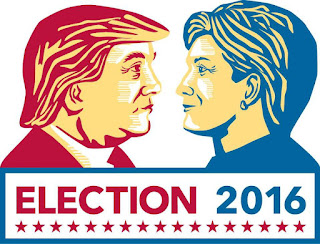In what seems to be a recurring theme and ultimate realization in my posts, too much of anything is never healthy. Within the realm of this class, I held this to be painstakingly true when discussing our relationships with technology. For me, I’d like to say my relationship with technology is quite an interesting one, to say the least. Being born in 2001, I may not have had the privilege to see the first television, the first computer, or other pioneering advancements in technology, but I did have the privilege to see the evolution of the digital footprint of technology; the internet unfolding before my very small, naive eyes. I still remember the first Iphone, a touch screen phenomena, or the very first layout of Instagram. But one of the most fond memories I have is adjacent to that discussed in the video titled “64-65 NY World’s Fair FUTURAMA Ride Video.” When I was younger, my family and I would take trips to Walt Disney World, in which we would go on one of my favorite rides there, located in Tomorrowland: The Carousel of Progress. This ride, although not exciting for some, stimulated my hope for a stronger and better future because of the advancement of technology. It gave me hope too, that every tomorrow would be better because of this ever-evolving technology. I think the biggest part, or the middle man of relationships with technology is naivety. Being naive and thinking technology can do it all, or being cynical that technology can do nothing at all; will get us nowhere. It is about this middle ground, a cynicism or curiosity with a dash of hope, that will help us balance our relationships with technology going forward. After watching this FUTURAMA video, I felt like that naive younger me, wishing to believe in something that fondly again.
I can not however sit here and say I still feel that sense of hope in technology today. My parents were never a big fan of children getting cell phones, or using social media. So, I never had any real access to technology until I was about halfway through middle school, when I got my first ever phone. Like any young child, I obsessed over my phone. The apps I could put on it, the accessibility to text my friends; my eyes were never leaving that screen, until it was time to lay my head to rest. However, even still, technology had not yet overtaken my world. It wasn’t until I made my first Instagram account that I realized the endless opportunities social media and technology provided. This newfound digital freedom was exhilarating. As I grew older, I downloaded more and more social media apps to connect with people all over the world. I began making friends with people from places like Australia, Canada, and all over the UK. Although I didn’t realize it at the time, this was my gateway to the start of one of my most unhealthy relationships to date: myself and technology.
Going through high school, I used my phone as an escape, a way to not have to socialize with those around me, and a way to hide from reality. Without it sounding like a cop-out, I think my relationship with social media strongly contributed to the introverted personality I present today. Downloading social media and leaning into this newfound technology was essentially me cosigning my personality into the stratosphere of the internet. Although I have not been personally affected, social media opened my eyes to the many cruel aspects of the world, such as cyberbullying. According to the National Center for Health Research, of children aged 13-17, around 13% report having depression, and 32% report having anxiety. These percentages now must coexist with the already 25% of adults aged 18-25 who report suffering from various mental illnesses. In most cases, social media’s toxicity is the main reason high profile people (ie. celebrities) delete all social media altogether given the latter. It is through even these rough times too that I learn who I do NOT want to be or how not to act.
Social media and the advancements of technology does have its perks too, that often go unnoticed when discussing heavy topics such as the mental effects the internet inflicts onto its users. For example, music streaming and having this newfound access to music changed my life for the better. Before having access to millions of different bands and genres, I was simply limited to my parents’ music taste. After this new discovery, I began to grow into myself, making choices of things I liked and didn’t like, and discovered that my passion for music was much stronger than I could have ever imagined. From there, I fell in love with the literature of music, and people’s touching ways with words. In high school, I began a blog in which I analyzed some of my favorite songs; and found my passion for writing and music. This is still translated today, as my major is Social Media and Digital Communications, with hopes to work within the music industry. Due to this being the focal point of my degree, I of course have social media accounts on every platform, though I never really post and tend to keep my life private. Therefore, my digital footprint is relatively small, with only my public accounts coming up upon searching myself. I additionally noticed a lot of results for my father rather than me when searching myself, mostly due to the fact that he is a prevalent member of my home community and is the Director of Transportation Agencies at our state transportation company. However thankfully, my family and I as a whole do not have that much personal information about us online.
As another important perk to new technologies and social media, new job opportunity sites such as LinkedIn have proven to be a crucial networking platform in the past decade. It made the job application process much easier, and allows for employers seeking applicants to get a preview into the people they plan to hire, before even an interview process.
Looking back after learning from both this class and my life experiences, I can conclude my relationship with technology has gotten better, but only because of my awareness to avoid its obsessive traits. I could also say this relationship is similar to that of a love-hate relationship. I feel like it is additionally important to address the idea that technology is inescapable, so many things in this day and age are reliant on it, and technology won’t be going anywhere anytime soon. It is essentially like any bad in-law: we have a choice; to find a way to get along with it and formulate a stable relationship, or get left behind.


























